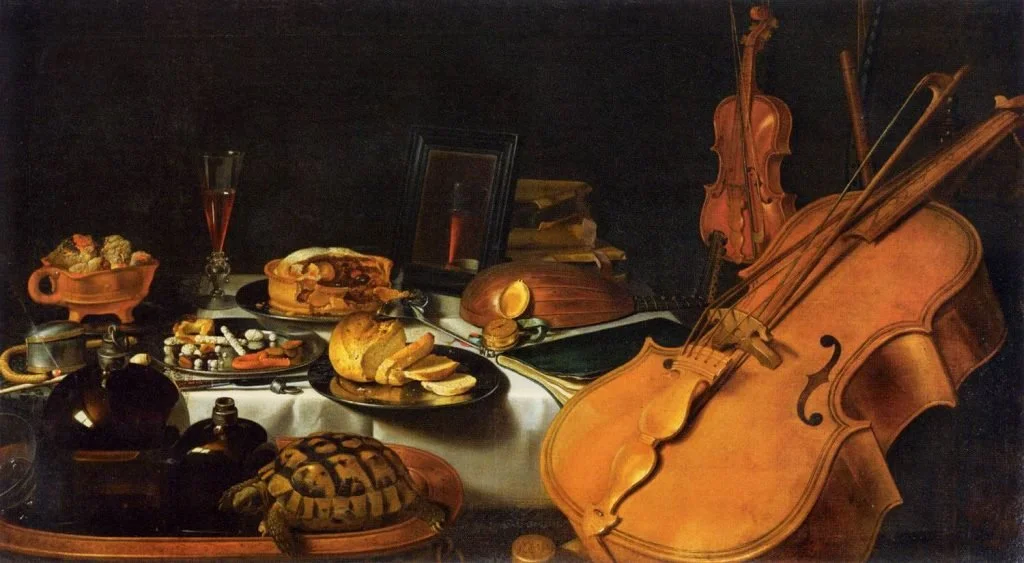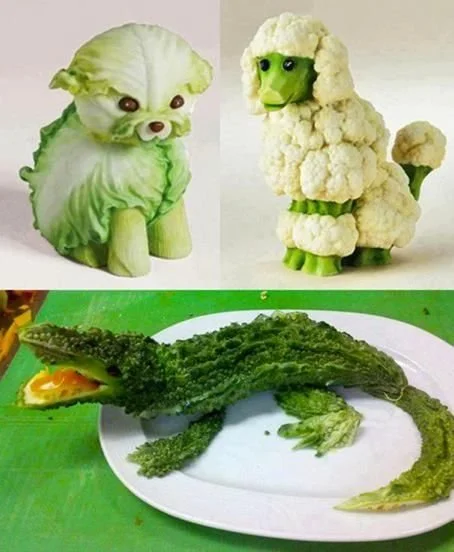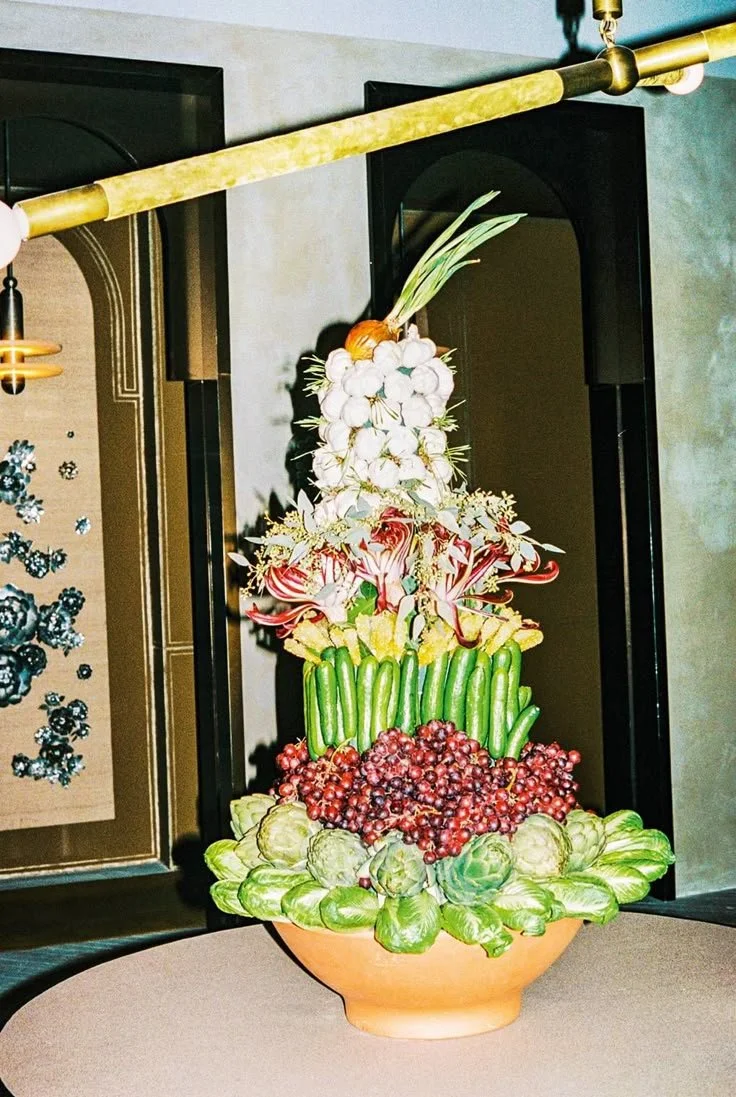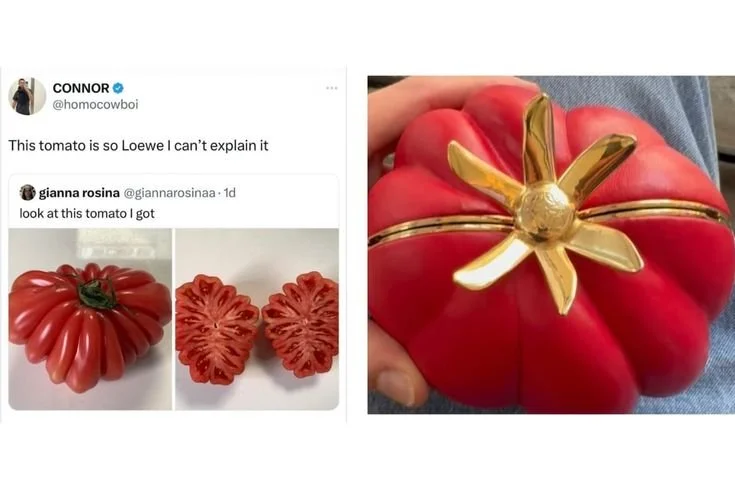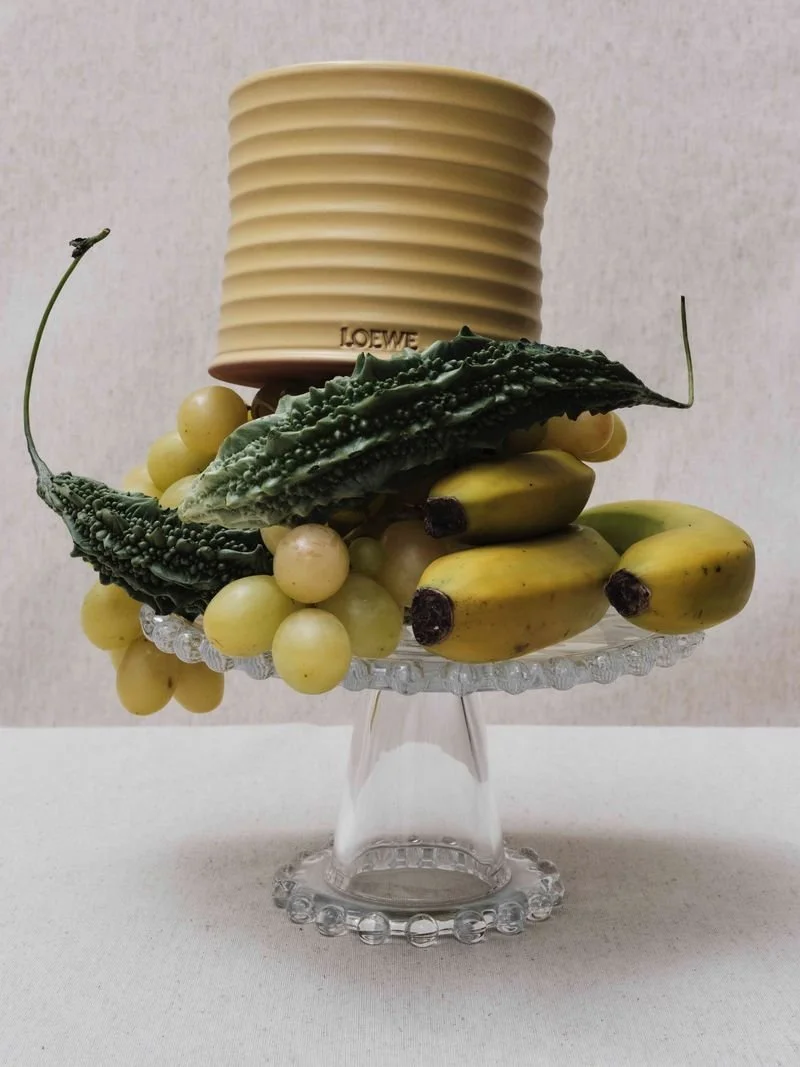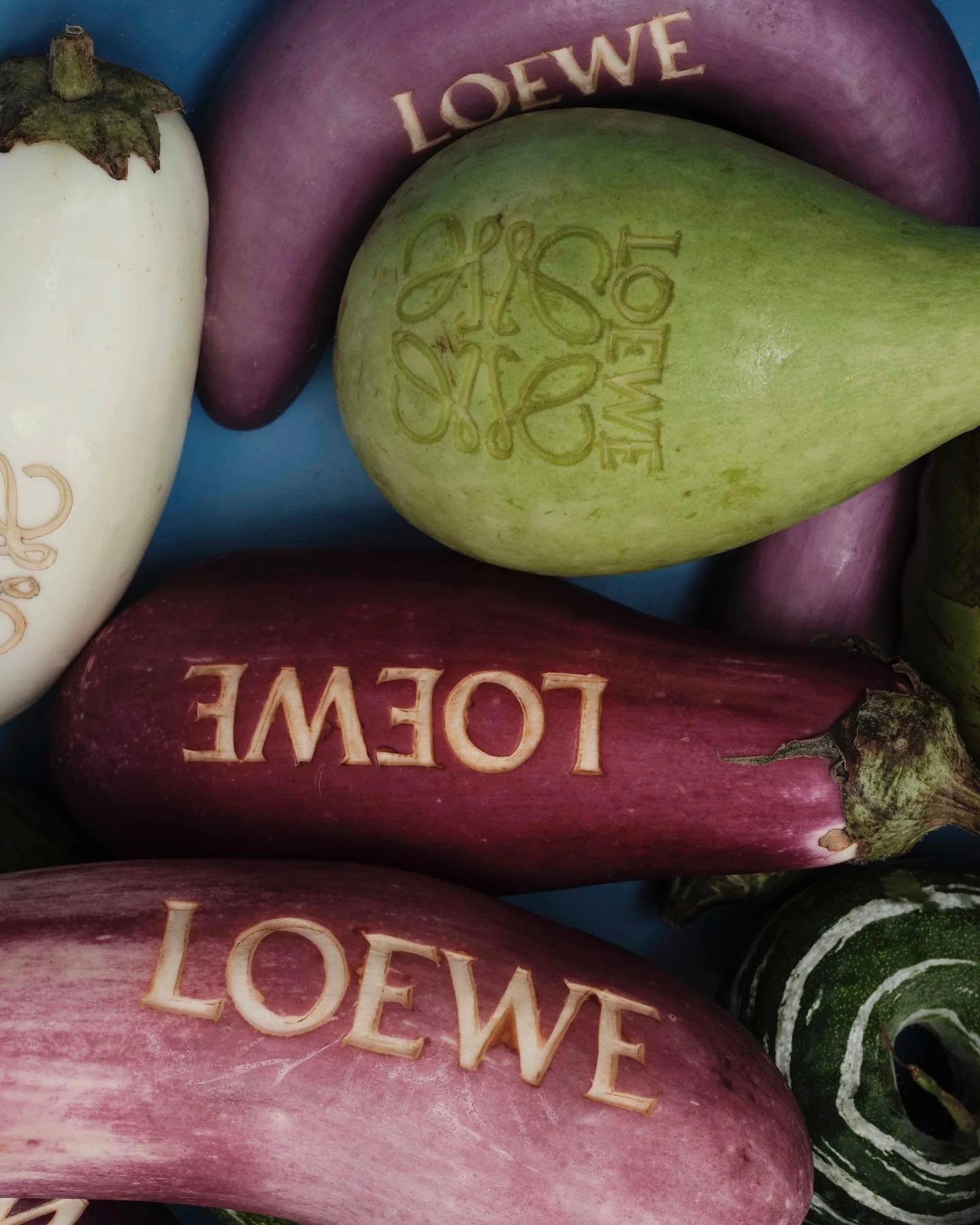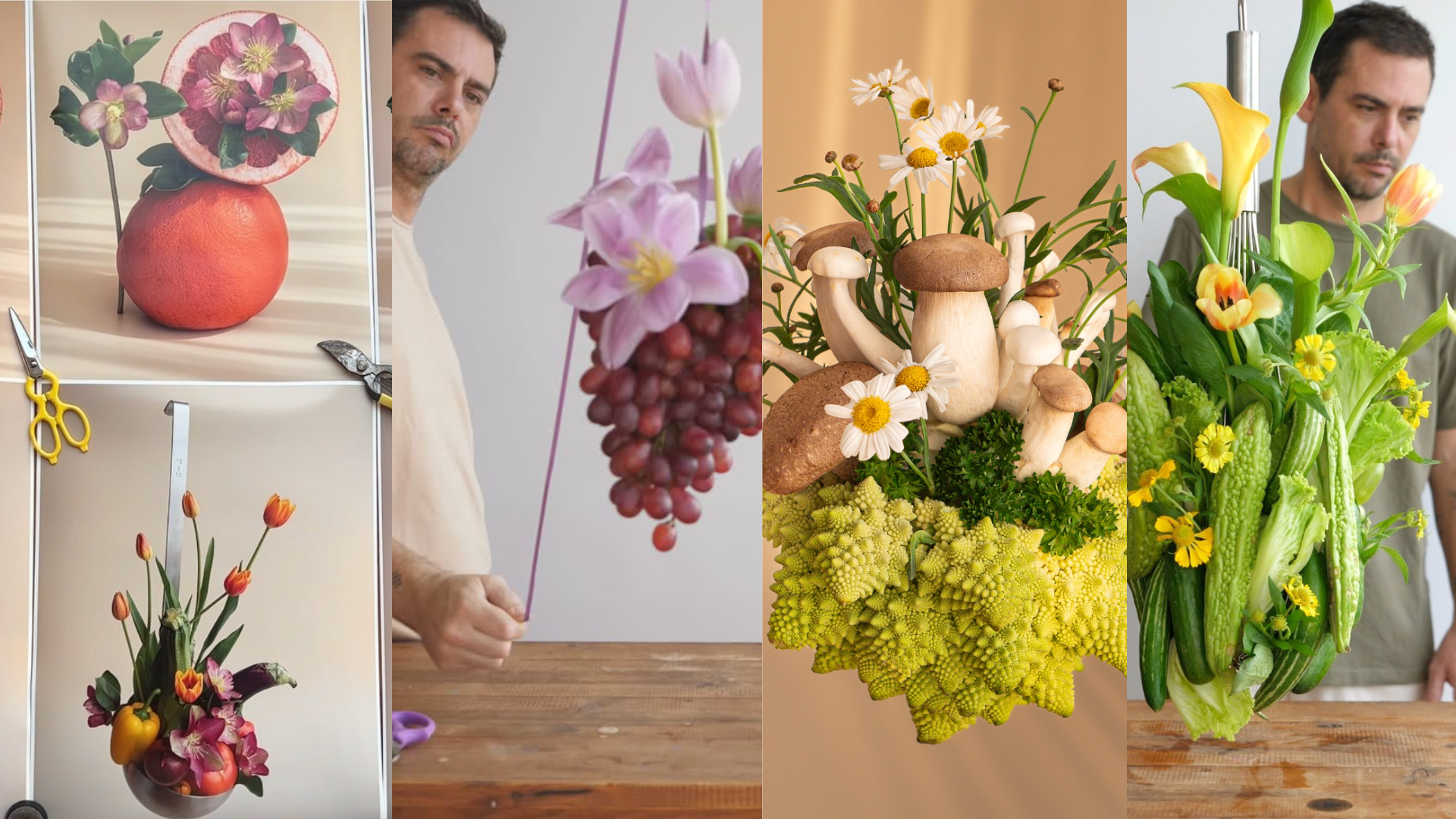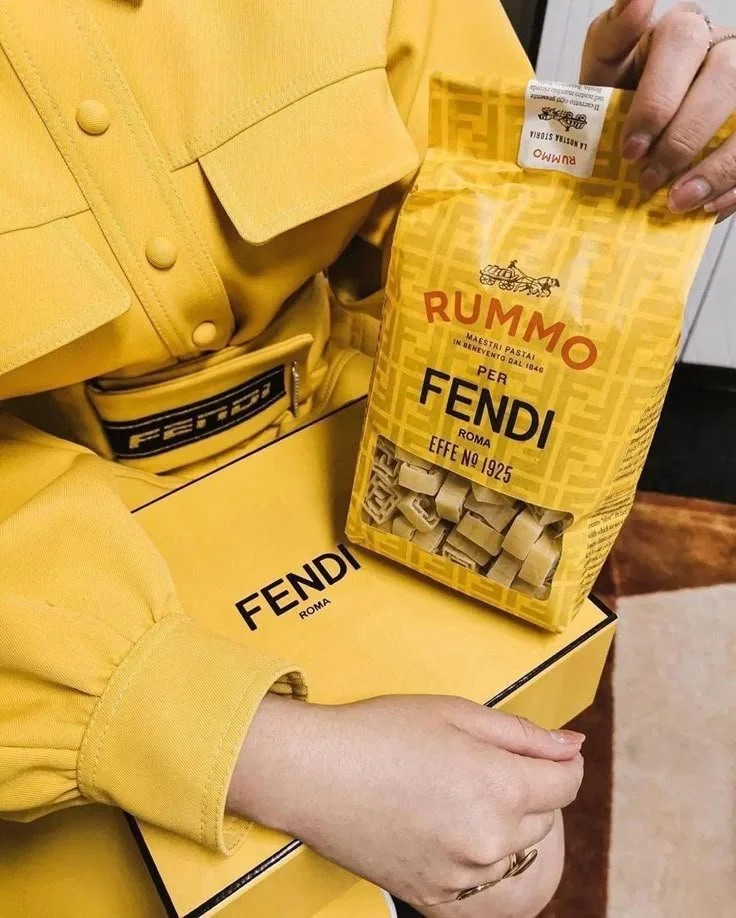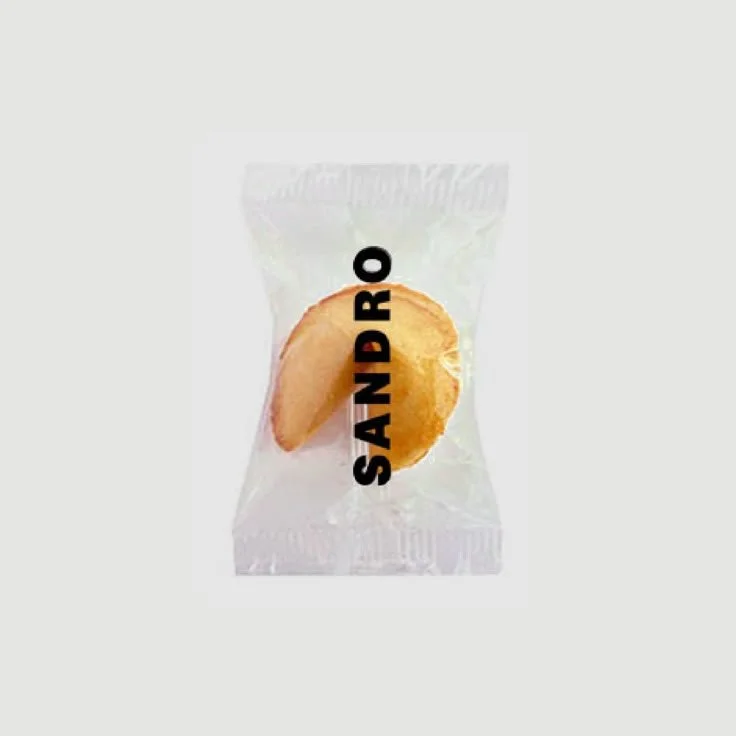From Fields to Front Rows: Why Luxury Fashion is Branding Food
Once upon a runway, luxury meant cashmere, calfskin, and couture. Now, it might also mean a tomato. A perfectly sun-ripened one — cradled in linen, stamped with a Loewe logo, and shot in soft morning light.
Luxury fashion’s latest obsession isn’t silk or scent — it’s food. Specifically, produce. From Loewe’s leather-wrapped peaches to Jacquemus’ lemony cafés and tomato-scented candles, the lines between pantry and prêt-à-porter are being delightfully blurred.
But this is more than a momentary nibble. It’s a rich, layered movement with roots in centuries-old traditions, fueled by digital aesthetics, shifting values, and the hunger for sensorial, seasonal experiences.
A Historical Appetite: Fashion and Food Through the Ages
This isn’t the first time fashion has flirted with food.
In the 17th and 18th centuries, Dutch and Flemish still-life paintings served up abundance with baroque drama: oysters, grapes, silk cloths, and silver — all arranged to signal wealth, desire, and decay. Fashion, too, has long used adornment and texture to tell similar stories.
By the early 20th century, department stores like Paris’s Bon Marché fused fashion with gastronomy. To shop well was to dine well. Taste, in every sense, was holistic.
In the editorial world of the 1960s and 70s, visionaries like Diana Vreeland and Irving Penn staged food-like sculpture — surreal, sculptural, exaggerated. Fashion spreads began to resemble feasts. And in the 1980s, nouvelle cuisine emerged with tiny, architectural plating that mirrored the decade’s maximalist shoulder pads and lacquered gloss.
Today’s designer fruit bowls are simply the latest expression in a centuries-old language of sensual, symbolic storytelling.
The Instagrammable Turnip: Aesthetic Produce and User-Generated Luxury
If the 1980s was about glossy editorial, today’s taste-making is user-generated.
On Instagram and TikTok, humble groceries — leeks, pomegranates, persimmons — are styled like heirlooms. Farmer’s market hauls are curated like capsule collections. Florists such as Meta Flora, or culinary stylists like Laila Gohar, have turned food into sculpture, turning radishes, butter, and trout roe into gallery pieces.
Luxury brands have been watching.
This wave of aesthetic fluency has reshaped how we visually consume food. And when a tomato is more photogenic than a handbag, it’s only natural that fashion wants in.
Enter Loewe’s Spring 2023 campaign: not a bag in sight, just close-ups of fruits — bruised, ribboned, imperfect. It reads like a love letter to seasonality and decay. Or Jacquemus: staging shows in wheat fields, designing lemon-shaped candles, and launching an entire Provencal café. Food is now both muse and merch.
Terroir, Tactility, and the New Language of Luxury
So why food? Because food is seasonal. Tactile. Temporal. It’s intimate and multisensory — everything fashion is trying to become in a post-material world.
In an era of burnout and overproduction, the most luxurious thing might be a moment — a meal, a scent, a memory. The tomato becomes an heirloom not because it’s expensive, but because it’s rare, traceable, storied. It speaks to care, not just cost.
Luxury houses are tapping into this new kind of value: terroir instead of trend. Emotion instead of excess.
A Loewe lemon isn’t just a prop. It’s a vessel for ritual, place, and identity. It's a flex — not of wealth, but of taste.
Lifestyle Fluency and the Rise of Edible Branding
We’re living in an era where lifestyle is the product.
Gen Z and millennial consumers are less interested in logos and more compelled by lived experience. A Jacquemus pastry, a branded olive oil, or a meal at Gucci Osteria becomes a new kind of status symbol — ephemeral, but infinitely shareable.
This edible aesthetic aligns with the broader shift toward “soft luxury” — a rejection of ostentation in favor of intentionality. And like fashion, food is cyclical. Local. Global. Ceremonial.
The branding of food is branding of belonging.
Glen Arvor is a French florist and food sculpturist based in Hanoi who defies gravity with his creations.
What’s Next? The Future of Food x Fashion
This isn’t a trend; it’s a trajectory. Expect to see:
Seasonal, farm-to-table drops — branded produce boxes, seed packets, and fermentation kits styled like runway capsules.
Multisensory storytelling — edible perfumes, tableware that references archival patterns or heritage glazes, and ingredient-based homeware.
Experiential retail hybrids — think fashion cafés, sensory tasting rooms, or collaborations between designers and regenerative farms.
Scented sustainability — campaigns that smell like fig leaves, warm soil, or sun-scorched citrus groves.
At the intersection of climate urgency and digital saturation, food offers something rare: a return to real time, real senses, and real connection.
Final Bite: Luxury That Rots, Ripens, and Returns
In the end, this movement isn’t just about lemons and logos. It’s about redefining luxury as lived experience.
Food rots. Food ripens. Food is shared. It’s tactile and intimate and deeply local — everything that luxury wants to be in an age of post-growth consumerism.
The table, it turns out, might just be fashion’s new runway.



